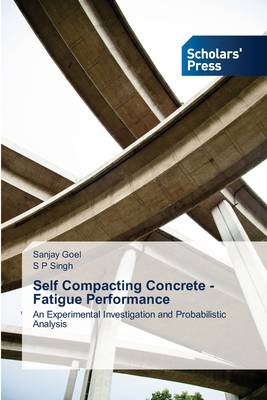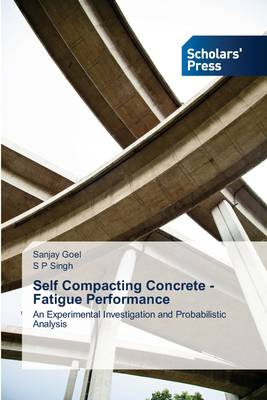
- Afhalen na 1 uur in een winkel met voorraad
- Gratis thuislevering in België vanaf € 30
- Ruim aanbod met 7 miljoen producten
- Afhalen na 1 uur in een winkel met voorraad
- Gratis thuislevering in België vanaf € 30
- Ruim aanbod met 7 miljoen producten
Zoeken
Self Compacting Concrete - Fatigue Performance
An Experimental Investigation and Probabilistic Analysis
Sanjay Goel, S P Singh
Paperback | Engels
€ 93,95
+ 187 punten
Omschrijving
Self Compacting Concrete(SCC), one of the latest innovations in concrete technology, offers a number of benefits over Normally Vibrated Concrete(NVC). Because of its inherent advantages, SCC is gradually replacing most of the NVC currently produced and generated tremendous interest amongst the researchers, engineers and concrete technologists. The title presents an investigation conducted to study the flexural fatigue characteristics of Self Compacting Concrete (SCC) and Steel Fibre Reinforced Self Compacting Concrete (SFRSCC).An extensive experimental programme was planned to obtain flexural fatigue test data for SCC and SFRSCC specimens. A significant reduction in the variability in the distribution of fatigue life data of SCC and SFRSCC was observed compared to NVC and NVFRC.The fatigue strength of SCC and SFRSCC has been evaluated in terms of endurance limit that was observed to be better than NVC and NVFRC.The results of the present investigation, reveals an overall better fatigue performance for SCC and SFRSCC over NVC and NVFRC, thus encourages concrete technologists and design engineers for the use of SCC and SFRSCC in structures wherein fatigue loading is predominant
Specificaties
Betrokkenen
- Auteur(s):
- Uitgeverij:
Inhoud
- Aantal bladzijden:
- 268
- Taal:
- Engels
Eigenschappen
- Productcode (EAN):
- 9783639702071
- Verschijningsdatum:
- 14/07/2014
- Uitvoering:
- Paperback
- Formaat:
- Trade paperback (VS)
- Afmetingen:
- 152 mm x 229 mm
- Gewicht:
- 394 g

Alleen bij Standaard Boekhandel
+ 187 punten op je klantenkaart van Standaard Boekhandel
Beoordelingen
We publiceren alleen reviews die voldoen aan de voorwaarden voor reviews. Bekijk onze voorwaarden voor reviews.











